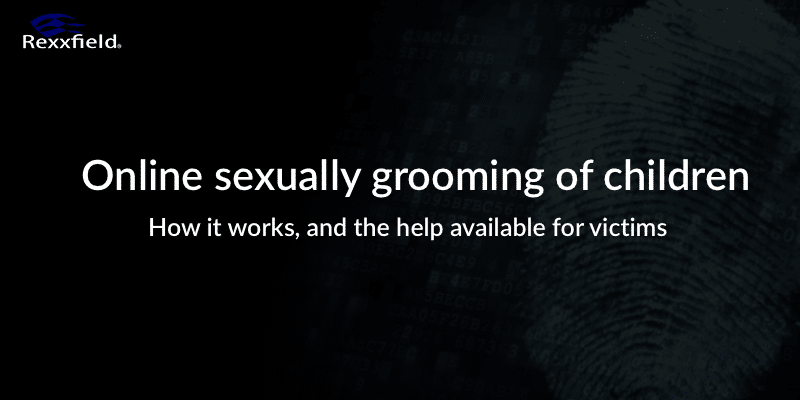Being Groomed Online
Data from the NSPCC shows a tsunami of children groomed online as predators exploit children at record levels. In 2022, data from NSPCC and figures from 41 police forces showed an increase of 84% since 2017/18, with over 27,000 offences recorded since 2017.
The majority of victims being groomed online were girls (82%). Most grooming takes place on Facebook, Instagram, Whatsapp (38%), and Snapchat (33%).
What is online grooming?
Online grooming, or sexual grooming, is when online predators use a broad range of tactics on the internet to sexually exploit children (and adults). The predator reaches out to a child, pretending to be someone else, intending to prepare them for sexual abuse. This can happen quickly but often happens over a period of time. It is always a process of exploiting children’s trust to shift expectations of what they think safe behaviour is, and they ultimately leverage fear and shame to keep a child silent.
Grooming was not created by technology; it existed before technology and the online world came into our lives. However, online predators have much more reach and opportunity due to the continuous increase of platforms available and the increasing prominence of digital environments in our lives. It is also much easier to groom a child online than in real life, due to the level of anonymity. A child can be groomed online by accepting a social media friend request from a stranger. Or even by talking to someone new in an online gaming forum or chat room. There is also an increase in children being groomed online via social media channels, like Snapchat and Instagram.
Case study: How we Located the Person Sexually Extorting a Teenager on Snapchat
According to the Pew Research Foundation, 32% of teens have been contacted by strangers on the internet, via social media or other online mediums. They also reported that 66% of teens have some type of privacy control on their internet profiles. However, because children are naturally curious, innocent, and naive, and almost always have a webcam/camera on their laptop or phone, it is very easy for victims to be convinced to exchange compromising photos or videos.
This is why it is very important for parents to have conversations with their children about this topic. Also, they should maintain some level of control over what their children do on the internet.
How online sexual grooming works

Predators often research their targets to collect personal details and find information to connect with them. They collect this information on social media, chat rooms, gaming forums, and other websites.
Online predators for grooming often create fake profiles, using attractive photos of boys or girls around the same age as their targets.They start an online relationship with the child being groomed while complimenting them, or offering a sympathetic response to any problems the target may have to gain trust.
When this trust is established, the online groomers move toward sexual conversation, convince their victim to send a sexual photo or video, to use that material as blackmail to gain more of what they want.
Online groomers target numerous children at the same time, hoping that one will respond to them. They create different online identities on several platforms, to trick victims into chatting and sharing compromising material to use for blackmail.
What does grooming mean sexually?
Unfortunately, according to The National Society for the Prevention of Cruelty to Children, or NSPCC, children being groomed online is almost always done by predators to commit sexual abuse by having the victim:
- Engage in sexual conversations
- Send sexual videos or photos of themselves
- Participate in sexual activities through a webcam or phone camera
Because of the previous grooming that led up to this point, the child trusts the groomer to do the above things. But then the predator uses this sexual material to blackmail the child to ensure a continuation of the provision of sexual material. At this stage, many children feel as if they have no way out and become victims of sexual grooming.
Warning signs
Children who are groomed online often become very secretive about their online activities and who they are talking to. Other warning signs are:
- Unusual preoccupied or distracted
- Withdrawn, and appearing quieter or sadder
- Having abrupt mood swings
- The inability to turn off their phones results in stress and worry.
What if you are groomed online?
If your child has been groomed online, or you are concerned that they are at risk, here are tips on how to support them and take action to report it.
First, try not to judge them for making poor decisions. They need your support, and you want your child to confide in you about what is happening, so you can gather the most information possible to supply to the police.
Collect the following information and evidence:
- The profile URL
- The profile username
- Download the conversation history (or make screenshots)
- The date when the grooming started
Then go to your local police station to report the online abuse, and you can report the online child exploitation to the FBI. Use the electronic Cyber Tip Line or call 1-800-843-5678. The Cyber Tip Line is operated by the National Center for Missing and Exploited Children in partnership with the FBI and other law enforcement agencies.
Unfortunately, the police don’t always know what to do. If they are willing to help you but are not sure how they can contact our cyber investigators for pro bono assistance.
Our cyber investigators can trace anonymous profiles on the internet and identify the online groomers responsible.
Case study: How we Located the Person Sexually Extorting a Teenager on Snapchat


